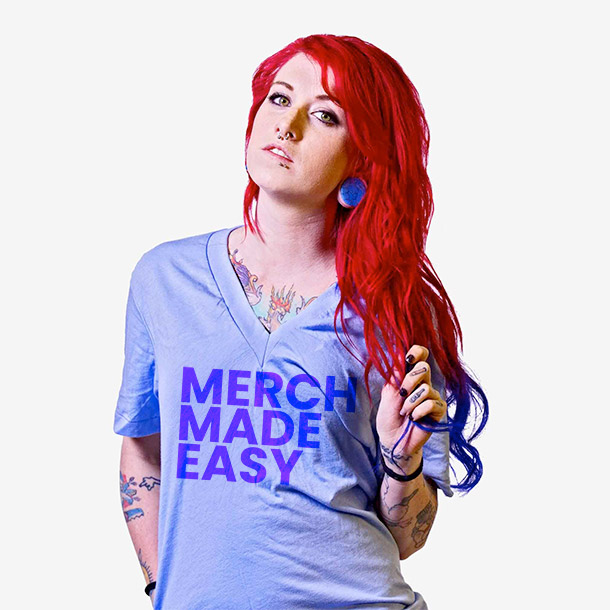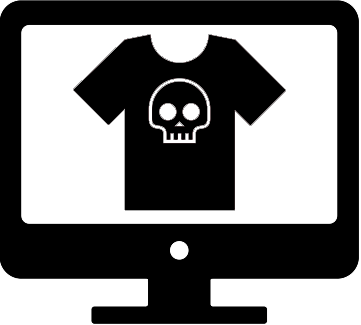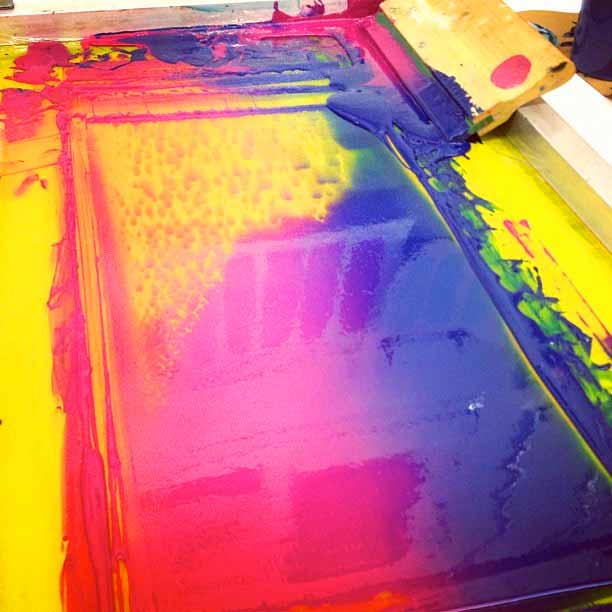Merch Made Easy
Are you an aspiring entrepreneur looking to make a name for yourself in the world of retail? Have you been dreaming of having your very own merchandise line, but don’t know where to begin? Look no further! Merch Made Easy is here to help.

Merch Made Easy with these products!
Merchcult Can Help.

Design All Your Merch In One Place.
Design all your products in one place using your own artwork or use our library of thousands of images and fonts!

Always Free Shipping On All Orders.
Merchcult always offers free shipping with all orders and know exactly what you will pay with our all inclusive pricing!

Need Help? Talk To A Merch Expert.
Having issues with the online designer? Need help getting a quote? You can always contact one of our Merch Experts!
This comprehensive guide will walk you through all the steps necessary to get your dream merch business up and running. From designing products that meet customer expectations, to finding reliable suppliers, this article has it all. You can even learn how to optimize shipping so that customers receive their orders quickly and without any hassle.
By reading on, you will gain insight into the exciting world of merchandising and be well on your way towards creating a successful brand and profit-driven venture. So what are you waiting for? Let’s dive right in and start making ‘Merch Made Easy’ today!
Understanding The Benefits Of Merchandise
When it comes to merchandising, there are a number of benefits that businesses can take advantage of. Not only does merchandise provide an extra revenue stream for a company, but also offers customers tangible items with which they can associate the business’ brand and values. To really understand how your organization can benefit from merchandising, let’s explore these advantages in more detail.
First off, selling branded merchandise provides a great opportunity for companies to increase their income. By creating products that people want to buy – such as hoodies or t-shirts with logos – businesses have the potential to make additional profits without needing any extra resources or labor costs. Furthermore, many entrepreneurs create limited edition items which allow them to capitalize on trends without having to go through long production cycles.
In addition to this financial benefit, merchandise is also useful when it comes to promoting the company identity and values. It gives customers something physical that they can remember you by and act as a reminder of what makes your business so special. This could be anything from handcrafted mugs made out of sustainable materials that represent environmental responsibility, or even just simple clothing options featuring the logo design proudly displayed across them! Whatever route you decide to go down, merchandising will help ensure potential buyers recognize your unique edge over competitors.
Merchandise has become increasingly popular amongst organizations looking to expand their reach and presence both online and offline; gaining further recognition for their brands along the way. Now that we’ve looked into some of the key benefits associated with selling merchandise, it’s time to move onto deciding what type of product works best for your particular business model…
Decide What Merchandise To Sell
Deciding what merchandise to sell can be a daunting task, like walking through an endless maze. However, with the right guidance and a little bit of planning, you’ll soon find yourself navigating this complex landscape in no time!
The first step towards choosing your merchandise is researching trends and customer preferences. Take the time to understand what items are most popular among your target audience and which products will fit into their lifestyle. Additionally, consider stocking more unique items that may not necessarily be trending but could still generate interest from customers.
Once you have identified potential products and brands to stock, it’s important to assess whether they align with your brand values. This ensures that all of your offerings accurately reflect who you are as a business and stand out from other competitors in the marketplace. With these considerations in mind, you can confidently select the perfect range of merchandise for your store. One of the best options for merchandise is to start with a Gildan 100% cotton t-shirt. As you move forward with setting up an online store, these decisions become essential building blocks for success!
Setting Up An Online Store
In this digital age, setting up an online store has never been easier. Whether you’re just getting started in the eCommerce world or looking to expand your existing business, creating a retail presence on the web is key for success.
The potential of a virtual storefront can be daunting at first but with some help from modern technology and knowledgeable advice, it’s not as overwhelming as one might think. When beginning the process, start by researching different platforms that will best meet your needs – WordPress, Shopify and Wix are all popular options with their own unique benefits.
Next comes designing and building out your virtual shop front. Here you’ll want to consider factors like how many products and product categories you have, what type of payment processing system works best for you, if any additional features need to be added such as newsletters or customer reviews and so forth. Having a clear vision of what kind of experience you’d like customers to have when they visit your site is also important to keep in mind. With all these elements in place, you can create an inviting space for visitors that encourages them to return again and again!
By taking time to carefully plan out each step involved in setting up an online store, entrepreneurs can more confidently venture into the realm of eCommerce – merch made easy!
Decide How To Sell Your Merch Made Easy
Did you know that in the U.S., ecommerce sales are projected to increase by nearly 15% this year? With more and more people shopping online, setting up an online store is a great way to take advantage of the digital marketplace. Deciding how to sell your merchandise can be a difficult process, but with these tips it doesn’t have to be.
First off, consider what types of products you’re selling. If you plan on using drop shipping or print-on-demand services, then there’s not much setup you need to do besides listing the items on your website. However, if you’ll be shipping physical goods from your own inventory, then make sure you have enough storage space for all your stock and plan out any logistics like packaging materials or delivery costs.
Next, think about where exactly you want to list your products. You could set up shop solely on your own website, or use third-party platforms like Etsy or Amazon Marketplace as well. Platforms like these often come with built-in customers and marketing benefits – so they might be worth considering if you’d rather focus on creating content than driving traffic yourself.
No matter which route works best for you, deciding how to sell will help ensure smooth sailing when launching your business. Now let’s turn our attention towards designing the perfect merch for your brand…
Designing Your Merchandise
Designing your merchandise might seem like a daunting task, but it doesn’t have to be. You can easily create an eye-catching product that will draw customers in and make them want to buy. Plus, you don’t need any special tools or complicated software – just some creative ideas!
When designing your merchandise, keep in mind who your target audience is and what kind of design they would find appealing. Consider colors, shapes, textures, typography, and other elements such as images or logos that could help bring the product to life. Take into account how the piece will look when printed on different materials too — for example, if you’re selling t-shirts, think about how the design looks against a white background versus black fabric.
The key to designing successful merchandise lies in finding a balance between aesthetic appeal and practicality. Make sure your designs are not only attractive but also easy to implement so that they won’t take up too much time or resources during production. With careful planning ahead of time and attention to detail throughout the process, you’ll end up with products that both stand out and meet customer needs — setting yourself up for success.
As important as creating great looking products is pricing them appropriately. The cost of each item has an impact on consumer purchasing decisions and affects profits down the line…
Pricing Your Merchandise
Pricing your merchandise is one of the most important steps in merch made easy. It’s essential to consider all factors, such as production costs and profit margin, when deciding on a price for each item you create. This can be tricky to get right, but with some careful consideration it doesn’t have to be overwhelming.
Start by evaluating what other brands are charging for similar items. You’ll want to factor in any additional costs that may not be included in their prices – this might include shipping fees or taxes, for example. Once you know how much money you need to make from each sale, use this information to establish your own pricing structure accordingly. Be sure not to undercharge or overcharge; finding the middle ground will help ensure that your products remain competitive yet profitable.
It’s also worth noting that offering discounts can be beneficial too, especially if you’re aiming to increase sales volume or build brand loyalty amongst customers. Consider introducing promotions at regular intervals throughout the year and track customer responses so that you can adjust strategies going forward if necessary.
With these tips in mind, pricing your merchandise should feel less daunting. Knowing how much money your business needs to generate from each product sold will help you develop an effective strategy and ensure success moving forward into manufacturing your merchandise.
Manufacturing Your Merchandise
Manufacturing your merchandise is an important part of merch made easy. According to research, 84% of businesses use third-party manufacturers for their products. This helps keep up with demand while also ensuring quality control and cost savings.
When it comes to manufacturing your own goods, there are a few things you’ll need to consider. Firstly, what kind of production method should be used? Depending on the complexity or size of the product, different techniques may be more suitable than others. Secondly, where will the materials come from and how much does this influence the budget? Lastly, who will handle fulfillment when orders come in? These are all key questions that must be answered before beginning the process.
It’s not enough just to create great products; they have to reach customers too! Next we’ll look at how to successfully promote your merchandise so people know it exists.
Promoting Your Merchandise
Promoting your merchandise is an essential step in merch made easy. After all, what’s the point of having a product if no one knows about it? The good news is that there are lots of methods for advertising and publicizing your brand.
First, you can use social media platforms to get the word out about your products. You could post pictures on Instagram or create ads on Facebook – whichever route you take, make sure to use high-quality visuals and captivating copy that speaks to potential customers. Additionally, consider taking advantage of influencers who have already built strong relationships with their followers – they can help spread awareness of your business quickly!
Another option is traditional marketing avenues such as radio spots or newspaper advertisements. Although these might be more expensive than digital options, they still remain effective ways to reach new customers. Just remember: whatever promotional tactics you choose should reflect the mission and values behind your company so that consumers know exactly who you are and why they should buy from you.
Now that we’ve discussed how to promote your merchandise, let’s move on to another important element: shipping your merchandise
Shipping Your Merchandise
Are you ready to take your merchandise from the digital shelf and into the hands of your customers? Then it’s time to start shipping. With merch made easy, sending out orders is as simple as a few clicks of a button.
First things first: make sure you have everything prepared for shipment. Check that all labels are printed correctly and securely affixed to packages, then check their weights against carrier guidelines for accurate pricing information. Once everything is in order, create an account with a trusted shipping provider — like USPS or FedEx — so you can track shipments and manage costs more easily.
Now comes the fun part: tracking each delivery! Whether you’re using automated shipping software or manual tracking services, know where every package is at any given time. This helps ensure timely deliveries and keep customers informed about when they’ll be receiving their purchases. Plus, if anything goes wrong during transit, you’ll be able to quickly address problems and provide solutions such as refunds or replacements if needed.
With these steps taken care of, your products will soon be on their way to happy customers around the world — no fuss required thanks to merch made easy! Now let’s turn our attention to handling returns and refunds…
Handling Returns And Refunds
Handling returns and refunds can be a tricky business. It’s like walking on eggshells – one wrong move, and you’ll have an unhappy customer. But don’t worry, with the right strategies in place, it doesn’t have to be hard work.
The key is communication. Keep customers in the loop of what’s going on with their return: when they can expect it back, or why there’s been a delay. That way, they won’t feel neglected or ignored if something goes wrong. You should also make sure your policies are clear and easy-to-understand so that customers know what to expect before they purchase from you.
Make sure you’re aware of any applicable laws for handling returns as well – being compliant ensures that everyone involved gets treated fairly. Respond quickly to inquiries about refunds and provide helpful solutions for unsatisfied customers; this will help build trust with them and establish loyalty towards your brand.
As important as providing good service after sales is tracking how many items get returned versus sold in order to assess customer satisfaction levels and identify opportunities for improvement down the line.
Tracking Sales Of Your Merchandise
When it comes to merch made easy, tracking sales of your merchandise is key. Knowing how many items are being sold and where they’re going can help you better understand what works for buyers and inform future decisions. Plus, with accurate records in hand, you’ll be able to analyze trends over time and keep tabs on inventory.
Keeping track of sales also helps when it comes to returns and refunds. If a customer contacts you about a return or refund issue, having the right data will make the process so much smoother – no need to guess at which item was purchased or when. And if you have a larger team helping out with orders? Everyone’s on the same page when numbers are tracked correctly from the start.
Data-driven insights into who’s buying your products means that collaborations with influencers become more targeted and effective too. You’ll know exactly who’s responding best to different types of campaigns, allowing you to create even stronger relationships with those people while planning future efforts. With all this information under your belt, taking control of your merch has never been easier!
Collaborating With Influencers
In the age of digital marketing, collaborating with influencers is a great way to promote merchandise. In fact, 62% of brands have collaborated with an influencer in the past year alone, making it clear that leveraging this strategy works.
Collaborating with influencers can be done through various platforms and social networks such as Instagram or YouTube. Not only are they influential figures within their respective niches but they also help spread your brand’s message quickly and effectively. Additionally, working together builds trust between both parties which helps build relationships for future collaborations.
The best way to get started is by researching potential influencers who may align well with your brand values and messaging. It’s important to ensure that you’re targeting individuals who will provide value back to your business and audience base too. This will help make sure your collaboration efforts are successful when executed correctly!
Common Mistakes To Avoid
Collaborating with influencers can be a great way to promote your merch made easy. But there are some common mistakes to avoid if you want your efforts to be successful.
First, don’t try and cram too much into the collaboration – it’s best not to ask for more than two or three posts per influencer. This helps ensure that they don’t feel overwhelmed by an unexpected workload, meaning they’ll produce better content as a result.
Second, make sure you negotiate fair compensation upfront; this will help create trust between both parties before any work begins. Additionally, being transparent about how long the partnership is expected to last will minimize confusion down the line.
Finally, many influencers prefer working with brands that have already established a presence in their industry; providing them with information on past successes can go a long way towards building good relationships. With these tips in mind, merch makers can take advantage of influencer marketing without running into pitfalls along the way. From here, we’ll look at legal considerations for selling merchandise.
Legal Considerations For Selling Merchandise
When you’re selling merchandise, there are some legal considerations to keep in mind. It’s important to be aware of them before diving into the world of merch-making.
For starters, depending on your location and target market, you may need to get a license or permit for certain types of sales or products. Additionally, knowing what taxes and fees apply is essential too. This can vary by country or state, so it pays to do your research. Lastly, if you intend on setting up an online store, make sure that all payment methods are secure and compliant with local and international laws.
It’s also wise to familiarize yourself with any intellectual property laws that might affect designs used for your products. Copyright infringement is serious business; no one wants their product pulled from shelves due to a law violation! With these legal matters taken care of, businesses can move onto the next step: best practices for selling merchandise.
Best Practices To Follow When Selling Merchandise
Selling merchandise is a great way to make money, but there are best practices you should follow. First and foremost, it’s important to know all the legal considerations for your business. This can include taxes, permits, intellectual property rights, and more. Doing this research before getting started will ensure that you stay compliant with local laws and regulations.
Once you have taken care of the legal side of things, it’s time to think about marketing your product or service effectively. Whether you’re selling online or in-person, having a good grasp on customer acquisition strategies and advertising techniques will help increase sales. Additionally, investing in quality packaging materials can go a long way toward creating a positive customer experience.
Finally, tracking your progress is essential if you want to optimize operations and maximize profits over time. Keeping an eye on metrics like website visits, conversion rates, cost per unit sold, etc., can provide valuable insights into how well customers respond to your offerings — allowing you to make improvements as needed. With these best practices at hand, merchandising becomes easy!
Final Thoughts On Merch Made Easy
For many, the thought of selling merchandise can be daunting. However, with a little bit of research and planning, merch made easy! With the right manufacturer and legal paperwork in place you’ll be well on your way to successfully promoting your products. Cost-effective strategies such as social media campaigns are great ways to reach potential customers while tracking customer purchases will help you measure success. Finally, providing excellent customer service such as timely returns and refunds is sure to keep them coming back for more!
At the end of the day, setting up an online store doesn’t have to be complicated or overwhelming. Think of it like embarking on a magical journey – gathering knowledge about reliable manufacturers, creating effective promotions, handling customer issues gracefully – all these steps add up to a successful venture that promises joyous rewards down the road. Start taking those first steps today and enjoy watching your business flourish!
So go forth – explore and discover new possibilities when it comes to merch made easy. Don’t let fear stand in the way of achieving success; instead focus on what lies ahead and embrace this exciting opportunity head-on. You won’t regret it!
FAQ About Merch Made Easy
Finding a reliable manufacturer for your merchandise is an important part of the merch-making process. To ensure you get quality products, without any delays or unexpected costs, it’s essential to partner with a trustworthy supplier. A great example of this is the company Partake Foods – they found success by working closely with their chosen manufacturers to make sure all product designs and specifications were met perfectly before launch.
The first step in finding a good manufacturer is doing your research. You’ll need to consider things like cost, turnaround times, production capabilities, as well as payment terms and customer service. Doing comprehensive background checks on potential suppliers can help give you peace of mind that you’re making the right choice. Additionally, taking time to read up on reviews from other customers who’ve worked with them will provide more insight into how they operate and what kind of experiences people have had.
When it comes down to it, the key to choosing a reliable manufacturer lies in being thorough in your search and paying attention to detail when negotiating contracts or agreements. It’s also beneficial to create strong relationships with those involved because having direct access to information about orders, deliveries and progress updates can help save time and money in the long run. With this approach, you should be able set yourself up for successful partnerships that will make selling your merchandise easier than ever!
Promoting merchandise can be a challenge, especially when budgets are tight. But there are some cost-effective strategies that businesses of all sizes should consider.
Firstly, social media networks like Twitter and Facebook offer great opportunities to reach out to potential customers at no cost. Also, using influencers on these platforms is an effective way to get the word out about your products without investing in paid advertising. Creating content such as videos or blog posts that showcase your products can also help spread the message quickly and cheaply.
Finally, local networking events present good chances for merchants to meet their target audience face-to-face and build relationships with them. Additionally, attending trade shows is another great option for small business owners who want to promote their wares while connecting with industry professionals and key players in the market.
Creating promotional partnerships with other brands or services is yet another smart way to increase visibility and awareness of one’s own company offerings; this strategy works well for both established companies as well as startups seeking exposure.
The modern retail landscape is full of uncertainty, but one thing remains certain: retailers must be prepared to handle returns and refunds. Imagine a customer who has just purchased an item from your store that doesn’t quite meet their expectations or needs – they are likely counting on you for help in resolving the issue quickly and efficiently.
Fortunately, there are some best practices when it comes to handling returns and refunds that can make this process much smoother. It’s important to have clear policies regarding what is returnable so customers know exactly what they’re getting into before making a purchase. You should also ensure that any refunded items are returned safely with all original packaging intact. Additionally, consider offering free shipping for returning items as well as providing convenient ways for customers to contact you if needed.
When done right, these steps will not only keep customers happy but can even lead to more sales down the road due to positive word-of-mouth referrals from satisfied shoppers. By taking care of your customers now, you can create lifelong relationships built on trust between them and your brand.
Keeping track of customer purchases can be overwhelming, especially for the small business owner. It’s like trying to herd cats – you don’t know where they’ll go next or how much they’re spending. But with effective tracking strategies, it doesn’t have to be so complicated.
Tracking customer purchases is essential for success in any retail business. From inventory management to marketing campaigns, understanding what customers buy and when they buy it helps you maximize profits while satisfying their needs. By implementing simple procedures such as recording sales receipts and keeping records of online orders, you can easily keep tabs on your merchandise. Additionally, there are a variety of software solutions available that make tracking customer purchases even easier by providing detailed analytics about individual customers and product lines.
These tools offer great insight into consumer behavior which can help inform better decision-making around pricing, discounts, promotions and more. With this information at hand, merchants can create an enjoyable shopping experience tailored specifically to each customer’s preferences – surefire way to boost loyalty and increase sales over time!







